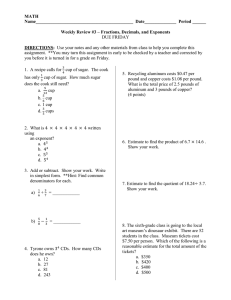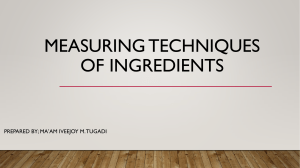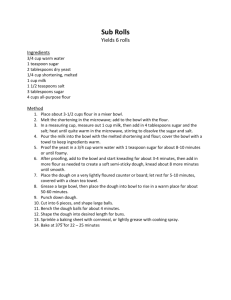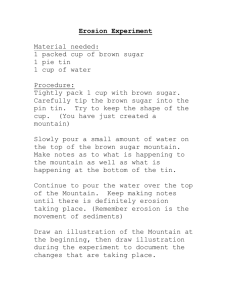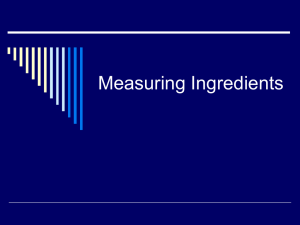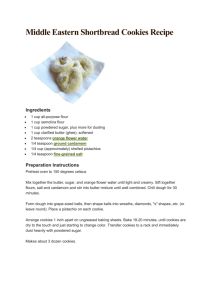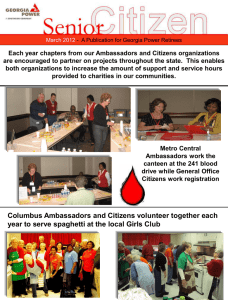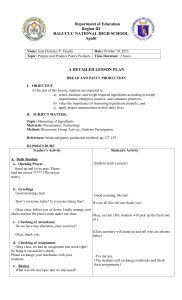Welcome to Culinary Arts I - Waukee Community School District Blogs
advertisement
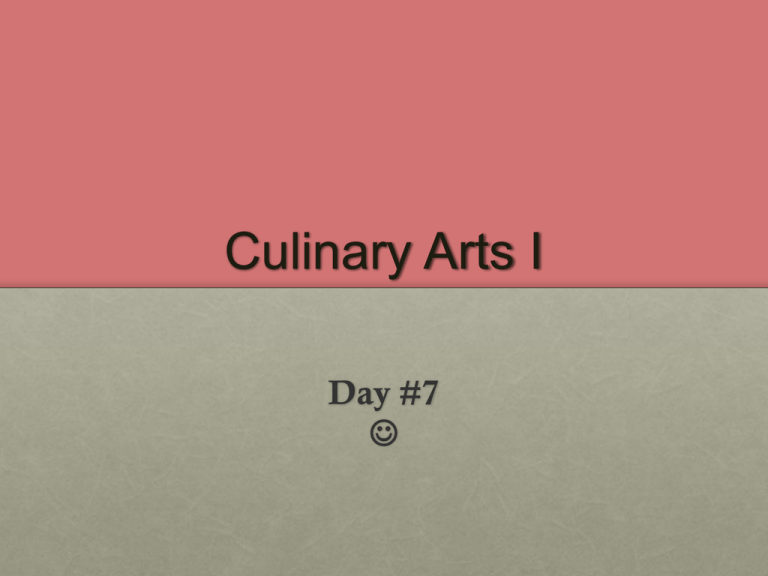
Culinary Arts I Day #7 How do we measure? • With your table, discuss how you would accurately measure the following items: • 1. Flour • 2. White Sugar • 3. Brown Sugar • 4. Water/Oil • 5. Flavorings/Vanilla • 6. Eggs • 7. Shortening Teacher demo • 1. Flour – dry measuring cup, dip into container and level off with a metal spatula • 2. White Sugar -- dry measuring cup, dip into container and level off with a metal spatula • 3. Brown Sugar - dry measuring cup, pack the sugar firmly into cup and level off with metal spatula • 4. Water/Oil – liquid measuring cup, fill to correct amount, get at eye level, and measure • 5. Flavorings/Vanilla – teaspoon/tablespoon – fill cup over a bowl so access is collected Teacher demo • 6. Eggs – Using an egg separator if necessary to crack over a bowl, or do just over a bowl to crack and then add into mixture incase of shells, blood vessels in yolk, etc. • 7. Shortening – Take a dry measuring cup and spoon the shortening into the cup with a rubber scrapper. Then scrape all excess into mixture. Cooking terms • With your table group and the help of Chapter 25 on page 355, define the following: • 1. Cube 7. Beat 13. Marinate • 2. Pare 8. Cream 14. Simmer • 3. Score 9. Dredge 15. Boil • 4. Grate 10. Baste 16. Mince • 5. Puree 11. Whip 17. Chop • 6. Fold 12. Stir 18. Saute Reading Recipes • With a “food partner”, you will read through the two recipes. 1st – look for the cooking terms, either just defined in class or other terms you have heard of before. 2nd – look at the overall layout of the recipe – which do you like better? Which is easier to understand? • Discuss as a class Why is it important to use recipes? Why is it important to evaluate before using? Kitchen Utensils • Identify the following kitchen utensils and their functions with your kitchen group. The textbook will be helpful in doing this activity. • You may also want to go to your kitchens to find these items. Please remember to WASH YOUR HANDS before handling any of the items.



